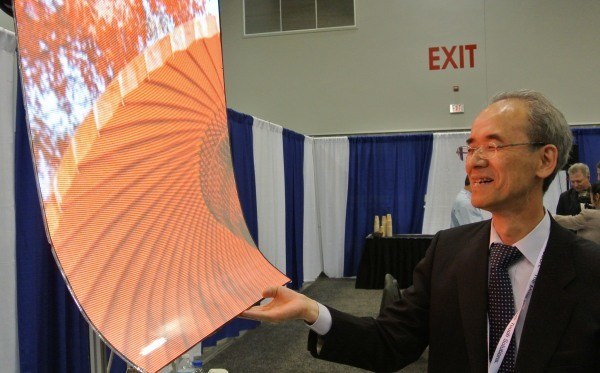
Guest Post: Digital Signage At SID 2013
June 3, 2013 by guest author, Stephen Randall
Manufacturers of large display panels don’t make much — or any — money on panels for television, so the rapidly growing market for digital signage is a bright spot.
SID Display Week — held May 19-24, 2013 in Vancouver, B.C. — is a display technology show that is not known for a focus on digital signage, so when I decided to look for digital signs there, I did not expect it to be an overwhelming task. Still, the signage industry has the energy and resources to fund some interesting variations of display technology and some of those could be seen at SID.
[highlight color=”eg. yellow, black”]This technical article originally appeared in www.HDTVexpert.com. [/highlight]
And, I thought, the relatively modest scope of signage at SID might permit a more leisurely and philosophical view of the relationship between developments in display technology and advances in digital signage. Let’s see how that worked out.
Sharp impressed everybody at SID 2012 with its 31.5-inch QFHD professional LCD monitor with IGZO backplane. This year, the company showed a 13.5-inch QFHD OLED display, in addition to the 31.5-inch LCD. There is no model number on the OLED, indicating it is a technology demonstrator and not a product. In fact, Sharp doesn’t say much about the place of OLED displays in its future, but the company keeps showing OLED technology demonstrations. Sharp did make note of its 60-, 70, and 80-inch class e-signage LCD modules, but did not emphasize them for SID.
At DSE in Las Vegas in late February, though, Sharp was definitely emphasizing the big stuff up to 90 inches diagonal. One message Sharp displayed on a 90-inch at DSE was “Go Big or Go Home.”QD Vision showed its Color IQ quantum-dot element — which won the Display Component of the Year Gold Award — in a commercially available Triluminous Sharp Bravia TV set. (For more information on quantum dots and LCDs, seehttp://www.hdtvexpert.com/?p=2741.)
Clearly, the enlarged color gamut produced by quantum-dot enhancement would add substantially to the impact of digital signage. So would large-screen OLED, but large-screen OLED is a lot more expensive.
BiSearch International (BSI) showed resized, convex signs at DSE, and added a concave sign for SID. The resized convex signs were originally designed as game-toppers for casinos, but have been enthusiastically received by beverage companies.
At SID, the concave sign was shown in a game application. The signs are resized under the Tannas patents. Except for the resizing, the curved signs are absolutely standard LCDs. The 20-inch convex sign was resized and curved by Tovis Co., Ltd (Incheon, Korea).
Tovis warms the LCD gently before bending. I assume the concave sign was also fabricated by Tovis, but I don’t know that for sure.
Bi-Search also showed a transparent 47-inch LCD sign. Such displays are no longer novelties, but BSI’s colors appeared quite saturated and true, and the clear parts of the display appeared quite transparent. That is probably the result of a very brightly lit box behind the display, since saturated colors and transparency are conflicting qualities for transparent LCDs.
E Ink introduced its Spectra display, which adds red particles to the traditional black and white ones, and won the Display Week Best in Show Award. The technology was under development at SiPix before it was bought by E Ink, so the display uses the SiPix Microcup structure instead of the E Ink Microcapsule structure.
At SID, E Ink had a poster showing the how the red, white, and black particles are arranged inside the Microcup for each of the three basic states (showing red, black, or white at a particular pixel site). What was not at all clear was how the display’s addressing mechanism could distinguish between the negatively charged black particles and the negatively charged red particles.
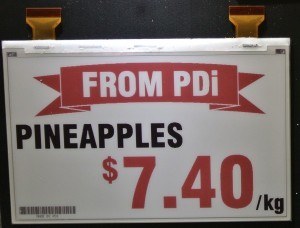
A 7.4-inch E Ink Spectra panel, which incorporates red particles, as well as white and black ones. (Photo: Ken Werner)
Product Management Director Giovanni Mancini refused to tell me, and seemed to enjoy being secretive. But he did say that red and black are distinguished through a characteristic that is “something other than charge.”
E Ink was showing Spectra-based modules made by Pervasive Displays in sizes ranging from 1.44? (for small shelf-edge labels) to 7.2-inches. Pervasive was also showing tiled black-and-white active-matrix E Ink Displays with Mpico timing controller. Each of the six tiles in the demo had 800×480 pixels Can three colors be far behind? Also in the E Ink booth were large, passively addressed, segmented, alphanumeric signs that exhibited the high contrast ratio we have come to expect from this technology.
Fraunhofer’s Heinrich Hertz Institute (HHI) was showing a large autostereoscopic display with “viewpoint adaptation.” Although AS-3D displays often have several viewing zones for different angles of view, they are all best viewed from a specific distance predetermined by the display’s design. HHI uses an AFX plug-in suite to generate multiple sets of views from the standard stereoscopic inputs. These multiview images are compatible with many existing AS-3D displays, said HHI Research Associate Bernd Duckstein.
For the demo at SID, there were three fixed viewing distances that Duckstein selected manually, but it is possible to automate the process by detecting the viewer’s distance from the display. HHI did not focus on signage in their demonstration, but signage is an obvious application.
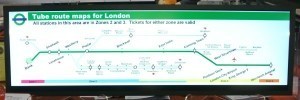
LiteMax Spanpixel digital sign based on resized LCD panel with final size of 49.5 inches and 1920×538 pixels. (Photo: Ken Werner)
LiteMax (New Taipei City, Taiwan and Fremont, California) was showing a variety of displays in its SpanPixel line, which are based on resized LCDs. The resized units on display included a 38-inch-diagonal, 1920×502 (16:4.2) with 2000 nits luminance and local area dimming; a 49.5-inch, 1920×538 (16:4.5); an 8-inch (16:5); and a 10.5-inch.
Prominently located on the display counter was the framed license certificate from Tannas Electronic Displays (TED) naming LiteMax the exclusive Taiwan licensee for manufacturing re-sized LCDs. And that brings us to Tannas Electronic Displays itself, which was showing what had been a Coby 40-inch TV set just two weeks before the SID show. At SID, the functioning resized display sat in the orignal Coby bezel, clearly indicating how much of the original display had been removed. Tannas also announced that GSD (Gumi-city, Korea) had just become TED’s ninth new licensee in the last 12 months for digital signage and commercial displays. Company president Larry Tannas said there were more licensees to come.
In the E-Ink-sponsored Innovation Zone, Shinoda Plalsma (SHIPLA) was showing a new version of its tube-based plasma display. Previous versions had the thin plasma-filmed tubes running vertically, so the display was vertically flat but could be bent into convex and concave curves horizontally. In this new version, the tubes ran horizontally so the display could be rolled up somewhat like a window shade.
A little history. Tsutae Shinoda began his work on plasma displays at Fujitsu Laboratories in the early 1970s. He is responsible for many of the essential development in plasma display panels; developed the first practical VGA color panel in 1992, which measured 21 inches; and developed the first 42-inch color PDP in 1995.
Very early in the development of plasma displays it was realized that the displays could be based on glass-plate sandwiches, glass spheres, or glass tubes. Obviously, glass plates won, but glass-plate PDPs are relatively heavy.
Over the last ten years or so, Shinoda has been working on PDPs in which both the plasma and the phosphors are contained in thin glass tubes. Using this technology, he has build flexible plasma displays that are very light in weight — light enough to be easily hung as banners.
The downside is that the tubes are 1mm in diameter, which results in a display resolution that is too coarse for close-up viewing. However, Shinoda said at SID, he is working on tubes of 0.5mm diameter, which will multiply the number of pixels per unit area by a factor of 4.
A limited number of SHIPLA flexible panel displays have been installed in Asia, but horizontal tubes with half the diameter could allow the company to find a significantly larger digital-signage market.
Finally, two not-quite-new technologies that are being promoted for television actually have a more logical application to digital signage.
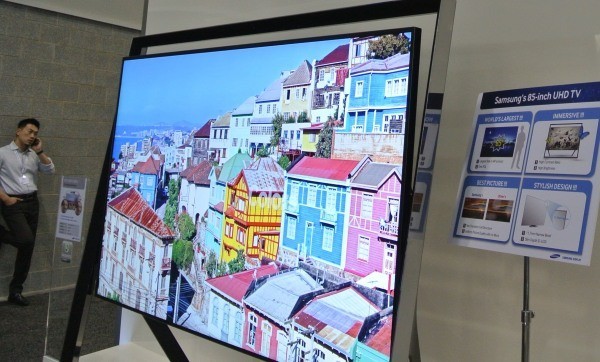
Samsung’s 85-inch, 4Kx2K LCD-TV is the most impressive LCD the author has ever seen. At an initial MSRP of $40,000, it should be. (Photo: Ken Werner)
First, although Samsung was emphasizing small OLED displays in its booth and in its CEO’s keynote address , the company did show its dazzling $40,000, 85-inch, 4Kx2K, LCD-TV. This set — which uses a full-matrix backlight, local-area dimming, and (seemingly) every video-processing trick known to man — is the most beautiful LCD-TV I have ever seen. It is startling, it is magnetic, and — at a price that is much the same as a small BMW — it is a sign.
Second was LG’s curved 55-inch OLED, which was showing 3D content at LGD’s SID booth. With very limited availability, a price north of $10,000, and the benefit of a curved screen for TVs in this size range being very much in doubt, this display is more a promotional device than a serious home-entertainment product. But novelty is the soul of advertising, and LG’s curved OLED is certainly an attention-grabber. (Actually, repetition is the soul of advertising, but perhaps you will allow me some poetic license.)In conclusion, I stand corrected. When all was said and done, there was quite a bit of signage-related technology at SID 2013 — if you were looking for it.
[Disclosure: Tannas Electronics Displays is one of the author’s clients. LiteMax is a licensee of Tannas Electronic Displays. BSI purchases resized panels and displays from Tannas licensees.]



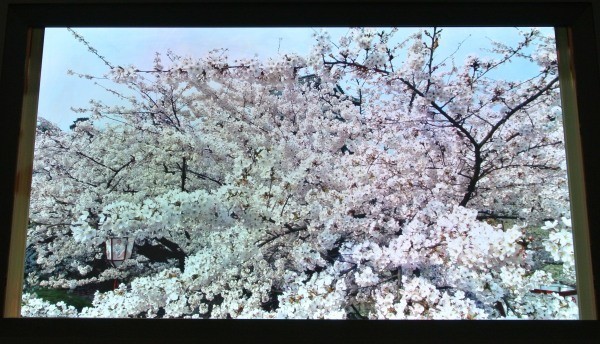
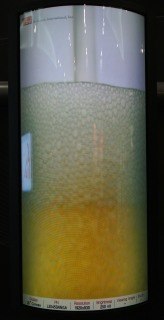
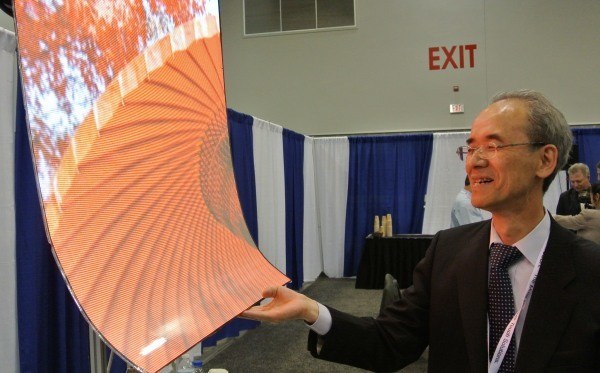
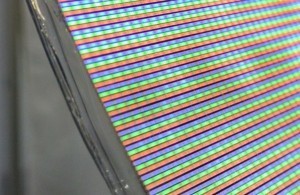
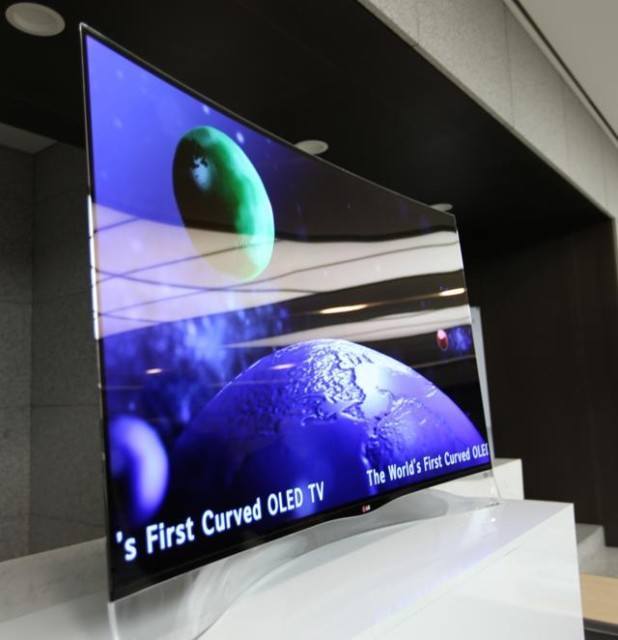
Leave a comment